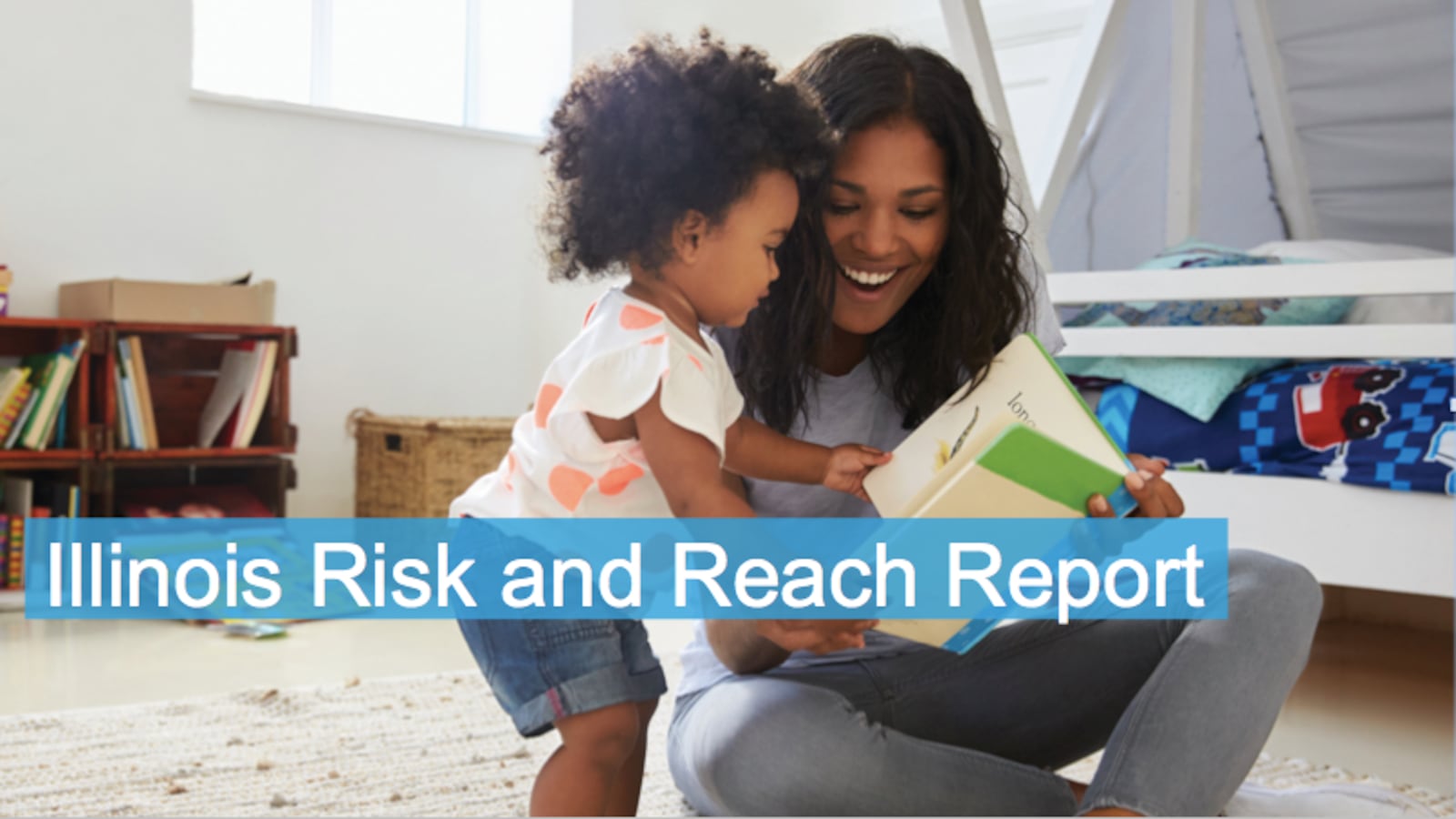Illinois spends less than 5 percent of its budget on children under 5, two-thirds of whom live in counties where they face high risks to their health or early development, according to a first-of-its-kind report previewed at a civic luncheon Monday.
Introducing the report at a City Club luncheon for business and civic leaders, Erikson Institute CEO Geoffrey Nagle and his group’s policy director, Cristina Pacione-Zayas, said that 68 percent of children under 5 lived in counties that were flagged as “high” or “high moderate risk.” The translation: There’s work to do.
Related: Three out of four Illinois children aren’t ready for kindergarten
“The biggest takeaway, for me, is that risk factors are not concentrated to one geography — they are spread throughout the state,” said Pacione-Zayas, who was just named to the Illinois State Board of Education by Gov. J.B. Pritzker. “It’s an opportunity to break assumptions we may have about particular geographies and particular populations and it’s an opportunity to really engage a broader group on how we address these issues.”
The Illinois Risk and Reach report is the most detailed look yet at the health of the state’s 945,000 children under 5 as well as the state’s early education system. The report examines 15 risks and breaks down data by county and by legislative district. Risks measured include lead exposure, rates of violence and maltreatment, and substance abuse-related deaths of parents and guardians, as well as education metrics such as kindergarten readiness and health indicators for mothers and babies.
Among the data points examined is the high average cost of child care, which has reached an annual statewide average of $13,747 a year, making Illinois one of the least affordable states for working parents.
Backed by Erikson and a coalition of early education groups, the report — to be released in full on March 29 — comes at a pivotal time, just after Gov. J.B. Pritzker has proposed boosting state spending on younger children by $100 million as part of a larger $594 million proposal. Now the Democratic legislature must decide whether to greenlight his plan or argue that money should be spent differently amid a $3.2 billion budget deficit.
Illinois’ early learning programs are still clawing back from a two-year budget impasse that decimated many of them. The report spotlights dramatic discrepancies even between neighboring counties on such metrics as seats available in high-quality child care centers.
The report also spotlights some information that was previously little understood, such as participation rates in publicly funded mental health services and counseling programs for the state’s youngest children. “We were so ecstatic when we were able to get this data,” said Pacione-Zayas. Not only does the data show gaps, she said, it also helps us “figure out what can we learn from the geographies that have greater reach.”
And it paints a more comprehensive picture than previously available of how money is spent or not — and which areas of the state benefit.
Illinois’ new lieutenant governor, Juliana Stratton, a former state legislator, said at a panel discussion that the report underscored the broad need for more strategic investments, not just for low-income children of color.
“What we see in these maps,” she said, “are risks to children all throughout the state.”
Click on the video below to see a preview of the project. A public webinar will be offered on March 29.
Editor’s note: This story was updated to reflect that counties received an overall risk score, and that 68 percent of Illinois children lived in a county that scored “high” or “high moderate” risk.

